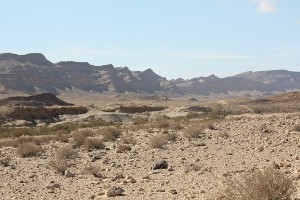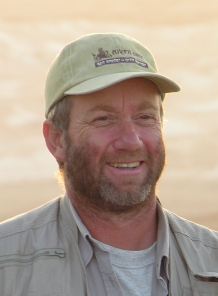Negev
The Negev desert is located in Israel’s southern half. Weather conditions are hot and dry during summers and moderatly warm during winters. Its north-western parts receive up to 300 mm of rain per year. South-eastern regions commonly receive only 10 percent of this amount. Daily temperature fluctuations are high due to an extreme scarcity of water which would normally buffer them.The Negev is classified as arid and has a large negative climatic water balance.
The center of the Negev is dominated by anticlinal ridges which run from North-East to South-West and form a breathtaking landscape. Makteshim are deep valleys surrounded by steep imestone and dolomite walls. Erosion during winter flash floods deepend these valleys whose beds consist of colored sands and chalk. Their walls are unique geological windows of the earth crust’s history. Five such Makhteshim are located in the Negev and nowhere else on earth. The Makteshim Katan, Gadol and Ramon are connected to the Rift Valley which influenced their development. Together, they offer insights into about a billion years of earth history. Various tour options are available for exploring different geological and ecological phenomena of this unique landscape.
deep valleys surrounded by steep imestone and dolomite walls. Erosion during winter flash floods deepend these valleys whose beds consist of colored sands and chalk. Their walls are unique geological windows of the earth crust’s history. Five such Makhteshim are located in the Negev and nowhere else on earth. The Makteshim Katan, Gadol and Ramon are connected to the Rift Valley which influenced their development. Together, they offer insights into about a billion years of earth history. Various tour options are available for exploring different geological and ecological phenomena of this unique landscape.
“Negev” means dryness in Hebrew. Animals and plants developed an astonishing range of adaptation mechanisms to these harsh conditions. Tides and ebbes of ancient civilizations left their footprints which are still visible today. The following pages provide more details and information about related tour options.
